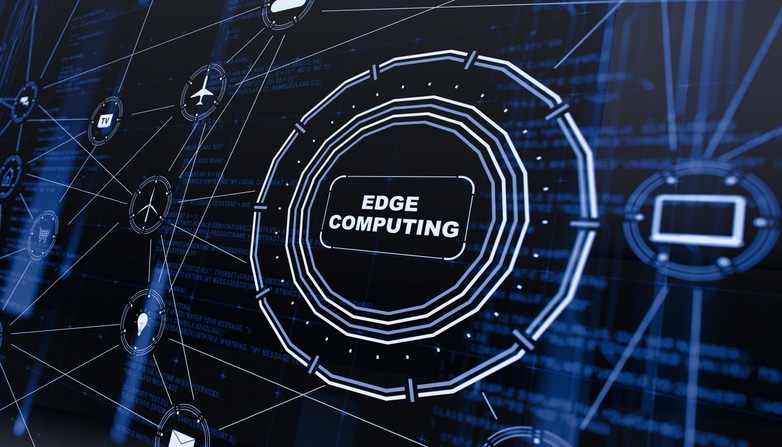Have you ever heard of edge computing? We expect to see edge computing as a strong force in the new decade. Read this blog to learn what the hype is all about!
From consumers to large corporations, networks, devices, and technology are used quite frequently in everyday life. With new phones coming out on the daily to new software being developed by the second, keeping up with everything is a tough task.
This boom in software and technology creates a lot of change in the world, and the same goes for technology leaders as they assess their means for distribution.
For years, technology has relied on the cloud when it comes to storage, management, and computing needs, but there is a new powerhouse that is taking the world by storm: edge computing.
What is Edge Computing?
Edge computing involves the process of capturing, housing, and processing data closer to the location of the data being generated. Instead of being transferred to another server location, such as the cloud, devices using edge computing can process their data in a more local environment, which takes away long response times and the need to work with big data centres.
According to Ryan Martin, principal analyst with ABI Research, edge computing is “everything not in the cloud. If we think about a hub-and-spoke model, the cloud is the hub and everything on the outside of the spokes is the edge,” he added.
IDC explains it as follows, “Edge computing works like a mesh of micro-data centres that process or store data locally and transmits all received data to a central data centre or cloud storage repository.”
As edge computing may be a relatively new term, many people are expecting edge computing to surge into the new decade with full force.
If edge computing is new to you, then this stat may be a surprise. But as more companies are realizing the true power of the edge, we can expect to see edge computing becoming even more popular in the coming years.
Check out the following stat in regards to edge computing:
By 2026, the global edge computing marketing is expected to rise from $2.1 billion (in 2018) to a skyrocketing $21.7 billion, according to Data Bridge Markets Research.
Extremely Secure
One huge reason why many companies decide to pursue edge computing is that it is very secure. This is mostly due to the fact that there are reduced opportunities for data interception since the data travels a shorter distance. With cloud technology, the data transfer process is secure, but there is a greater chance of data interception given the longer distance the data travels.
Meets High Demand
Another benefit of edge computing is that it is better suited for the high demand that we are experiencing with many companies. As more and more employees are gaining access to more devices and applications, more data is being transferred and moved around constantly, which can cause slow response times with standard computing processes.
Edge computing allows businesses to work with more data, more processes, more employees, and still stay efficient and secure throughout the whole process.
As we transition into the new decade, we can expect to see edge computing at the forefront of network security solutions.
Steadfast Solutions Has the Services You Need
Want to learn more about edge computing? Want to talk about the different network and security options on the market? No matter your IT service needs, Steadfast Solutions is here to help! We are proud to be an experienced IT service and managed support provider to those in Melbourne, Brisbane, Perth, and throughout Australia!
Whether you have questions or you would like to make an appointment, contact Steadfast Solutions today!




